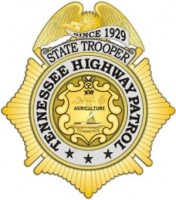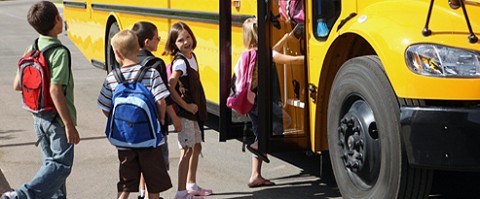 Nashville, TN – Tennessee Highway Patrol Colonel Tracy Trott is reminding motorists to exercise an abundance of caution in neighborhoods and around school zones during the upcoming 2013-2014 school year. State Troopers will target speeders, distracted drivers and those who disregard stopped school buses that are loading and unloading children.
Nashville, TN – Tennessee Highway Patrol Colonel Tracy Trott is reminding motorists to exercise an abundance of caution in neighborhoods and around school zones during the upcoming 2013-2014 school year. State Troopers will target speeders, distracted drivers and those who disregard stopped school buses that are loading and unloading children.
State Troopers issued 5,247 citations in school zones during the 2012-2013 school year. That’s up from 3,856 citations issued in 2011-12. Last year’s citations included 759 speeding violations and two citations for passing a stopped school bus.

Between 2008 and 2012, there has been a 7.0 percent decrease in the number of crashes occurring in school zones between the hours of 6:00am and 9:00am and the hours of 2:00pm to 5:00pm. There was also a 73.5 percent decline in the total number of school bus-related crashes between those same hours.
The National Highway Traffic Safety Administration (NHTSA) noted that 123 school-age pedestrians (younger than 19) have been killed in school-transportation-related crashes since 2001. Over two-thirds (69%) were struck by school buses and 26 percent by other vehicles involved in the crashes. There were 49 (40 %) school age pedestrians killed in school transportation-related crashes between the ages of five and seven, according to NHTSA.
“We have seen a 31.4 percent increase in the number of overall pedestrian fatalities across the state, compared to this same time period in 2012,” Trott said. “It’s imperative for drivers to share the road with pedestrians and bicyclists, and to comply with pedestrian yield laws. We all have a responsibility to make sure pedestrians are safe.”
In Tennessee, there have been 46 pedestrians killed on state roadways in 2013. That’s 11 more than at this time in 2012. Nationwide, there were a total of 4,432 pedestrian fatalities in 2011 (the latest figure available), the 14-and-younger age group accounted for 230 (5%) of those fatalities.
The Pupil Transportation section of the Tennessee Highway Patrol also oversees all school bus inspections in the state and determines whether public school bus systems are in compliance with the safety requirements by state law. During fiscal year 2012-13, 11,401 school buses were inspected with 1,367 being placed out of service.
Each day, 26 million children in the United States ride school buses, including 600,000 in Tennessee, according to NHTSA.
The speed limit in school zones is 15 miles per hour and the fine for speeding in a school zone is up to $500.00. It is also against the law to pass a school bus when it is stopped and loading or unloading passengers. The driver can be fined no less than $250.00 and up to $1,000.
Tennessee Highway Patrol Fact Sheet & Safety Tips
The Facts
All school bus drivers in Tennessee must attend an annual training course in order to receive and maintain the school bus endorsement on their Driver Licenses.
School buses are nearly nine times safer than passenger vehicles. But children must take care when boarding or leaving buses.
Young children are most likely to be injured around school buses because they:
- Hurry to get on or off the bus
- Act before they think
- Have little experience with traffic
- Assume motorists will see them and will wait for them to cross
- Don’t always stay within the bus driver’s line of sight
- Drop something as they are getting off the bus and run into the path of the bus to pick it up.
Safety Tips
For Children — Getting On and Off the Bus Safely
- Always remain in direct eyesight of the bus driver;
- Get to the bus stop in plenty of time;
- Take 10 giant steps back from the curb while waiting for the bus and 10 steps when exiting the bus;
- Never try to get anything left on the bus after exiting;
- Never reach underneath the bus;
- Always follow the driver’s directions for how to cross the street;
- Be alert to traffic and look both ways;
- Always cross in front of the bus, but only when the bus driver signals it is safe to do so.
- Have a safe place to wait for your bus, away from traffic and the street.
- Stay away from the bus until it comes to a complete stop and the driver signals you to enter.
- Use the handrail to enter and exit the bus.
- When exiting, look before stepping off the bus to be sure no cars are passing on the shoulder (side of the road). Move away from the bus.
- Before crossing the street, take 10 “giant steps” out from the front of the bus, or until the driver’s face can be seen. Wait for the driver to signal that it’s safe to cross.
- Look left-right-left when coming to the edge of the bus to make sure traffic is stopped. Keep watching traffic when crossing.
- Be aware of the street traffic around you. Drivers are required to follow certain rules of the road concerning school buses. However, not all do. Protect yourself and watch out!
For Parents
- Supervise children to make sure they get to the stop on time, wait far away from the road and avoid rough play.
- Teach your child to ask the driver for help if he/she drops something near the bus. If a child bends down to pick up something, the driver cannot see him/her and the child may be hit by the bus. Have your child use a backpack or book bag to keep loose items together.
- Make sure clothing and backpacks have no loose drawstrings or long straps that could get caught in the handrail or bus door.
- Encourage safe school bus loading and unloading.
- If you think a bus stop is in a dangerous place, talk with your school office or transportation director about changing the location.
For Drivers
- Yellow flashing lights on the bus indicate that it is preparing to stop and load or unload children. This means cars need to slow down and prepare to stop.
- It is illegal to pass a school bus with its red flashing lights and stop signal arm activated. Vehicles may not pass until the flashing red lights and signals are turned off or when the bus driver motions them through.
- Vehicles traveling in the same direction as the bus are always required to stop.
- Vehicles moving in the opposite direction as the bus are also required to stop unless they are on a divided highway.
- Never pass on the right side of the bus where children are entering and exiting. This is illegal and can have tragic results!
When Riding In A Car
- You might have heard before that most traffic crashes occur close to home…they do.
- Safety belts are the best form of protection passengers have in the event of a crash. They can lower the risk of injury by 45%.
- You are four times more likely to be seriously injured or killed if ejected from the vehicle in a crash.
- Everyone needs to be buckled up properly. That means older kids in seat belts, younger kids in booster seats and little kids in child safety seats.
When Riding A Bike
- Mind all traffic signals and/or the crossing guard — never cross the street against a light, even if you don’t see any traffic coming.
- Walk your bike through intersections.
- Walk with a buddy.
- Wear reflective material…it makes you more visible to street traffic.
About the Tennessee Department of Safety and Homeland Security
The Tennessee Department of Safety and Homeland Security’s (www.TN.Gov/safety) mission is to ensure that our state is a safe, secure place in which to live, work and travel; enforce the law with integrity; and provide customer-focused services professionally and efficiently.


